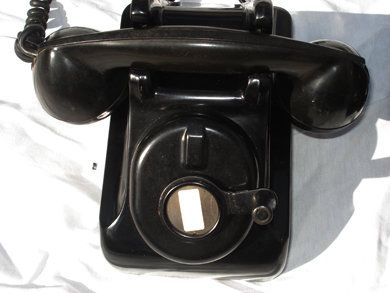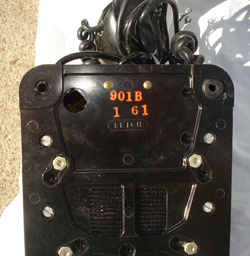 |
|
|||
 |
 |
|||
RINKER ON COLLECTIBLES — Column #1447 Copyright © Harry Rinker, LLC 2014 Questions
and Answers
QUESTION: I have a pair of bronzed baby shoes. The person to whom they belonged was born in 1946. Do they have any value? – F, Reading, PA ANSWER: In the course of my travels, I have run across dozens of bronzed baby shoes, some just the shoes themselves while others were mounted as bookends or on plaques. Your question triggered a hunt for the history of this cultural phenomenon. Violet Shinbach is known as the “mother of baby shoe bronzing.” While shopping at a Cleveland department store in the early 1930s, she saw a pair of “bronzed” baby shoes. The department store was using a local metal plater. Shinbach had a pair of her child’s shoes bronzed. Seeing a business opportunity, she struck a deal with the plater and began soliciting business by going door-to-door. She also approached other department stores and jewelry stores touting her services. After a move to Columbus, Ohio, Violet continued to sell bronzing baby shoe services. In 1934, Violet and her husband Sam founded the Bron-Shoe Company. The company incorporated in September 1949. In 1952, the company became a direct marketer via its American Bronzing Company Division. In 1965, the American Bronzing Company relocated to a 44,000 square foot building on Alum Creek Drive in Columbus. The American Bronze Company, currently run by grandson Robert Kaynes, Jr., still bronzes baby shoes. Services include bronzed shoes as a Christmas ornament, unmounted, mounted on a portrait stand, mounted on a base, or mounted as bookends. Costs range from $80.00 to $104.00. American Bronze also offers a porcelainizing service. Of course, baby shoes are only one product line. The company will bronze military items, pet collars, sports keepsakes, and other mementos. [See: www.americanbronzing.com] The secondary market for bronzed baby shoes is minimal to non-existent. Unless the shoes belonged to a famous personality, secondary market value ranges between $10.00 and $15.00. Bookend mounts command a 25 percent premium.
QUESTION: I have a pair of magneto telephones. One is marked on the back “901 B / 1 61 / LEICH.” I am trying to determine their value. – LB, Gibsonia, PA, Email Question ANSWER: Your question brought back an early collecting memory. My mother Josephine Prosser Rinker delivered prescriptions and other supplies for Prosser’s Drug Store in Hellertown, Pennsylvania. I encouraged my mother to “keep her eyes open” for antiques and other materials that customers might have for sale. On one occasion, she gifted me a paper bag containing a candlestick phone and a small oak box containing a magneto. She was so proud. When I asked her if the customer had a second set, she responded “I bought them both.” “Where is the other one?” “I gave it to your cousin Bud.” Although I carefully explained that in order to work, a second unit was required, my mother refused to ask Bud to return it. My bad news is your good news. You have two units.
The Cracraft-Leich Electric Company resulted from the merger of the Advanced Electric Company and the Eureka Electric Company. The company became Leich Electric Company in 1917. Located in Genoa, Illinois, Leich Electric manufactured telephone sets and small crosspoint telephone switches. Earlier the company was located in McCordsville, Indiana, and then Chicago. General Telephone Corporation purchased Leich in 1950. [For more information, see http://en.wikipedia.org/wiki/Leich_Electric] The Telephone Collectors International Library contains wiring schematics for the Leich 901 model. [http://www.telephonecollectors.info/index.php/browse/doc_details/1986-common-battery-telephones-leich-901-convertible-wiring] Several other websites do as well. Asking prices for an individual Leich magneto phone are “all over the place.” I found one listing for $35.00, another for $75.00, and a third for $150.00. None sold. Since you have two phones and thus the prospect of hooking them up into a working system, a conservative estimate for the value of your pair is $200.00. If you wish to sell them, try the Valhalla Tree Farm in Arlington, Washington. Valhalla has a 12-phone Leich Model 901 magneto phone system installed on their 100 acre woodlot. QUESTION: Is there a secondary market for 1980s and 1990s bluegrass festival posters? I have a collection of posters that I would like to sell. Some are signed by the performers.– L, Beloit, WI ANSWER: There is a secondary market, and it is affordable. I checked eBay and several vintage poster websites. The large number of reproductions was the first thing I noticed. This is a buyer’s beware marketplace. While some sellers clearly noted their offerings are reproductions, others did not. If you are going to buy, check the credentials, honesty, and guarantees of the seller. Second, the market still is trying to find a level. Prices range from under $10.00 to over $50.00. Scarcity and desirability remain to be established. Modern performers have yet to stand the test of time. In today’s world, individuals and groups arrive upon the scene and fade from it in less than a decade. Third, Burlington Records (Vermont) has a storefront on eBay. I was impressed by the listings and values. Jacob Grossi notes in a listing for a 2001 Bela Fleck and the Flecktones Austin, Texas, Bluegrass Concert poster: “While documentation of newer material is still in its infancy, you can bet the cultural value of the material will follow in the footsteps of its predecessors. In fact, certain areas of the current memorabilia scene are quickly chasing the value of the earlier material…” Since the market is immature, my advice is to wait. If you must sell, I recommend contacting a dealer and selling your group of posters as a single unit rather than allowing potential buyers to cherry pick the collection. You can always go to a bluegrass festival, preferably one from which some of the posters originated, and try selling them there. Set a price that makes you happy. Remember, the more you charge, the less likely you are to sell them. Do not get greedy. QUESTION: I am trying to help a friend who recently moved to a nursing home and is trying to sell some Frederic Remington replicas made by the Franklin Mint. Each is accompanied by a certificate of authenticity (COA). A small sticker on the bottom says “Crafted in Thailand.” Can something made by the Franklin Mint be crafted in Thailand? I have a buyer who is interested but is questioning the authenticity. Also, what would you consider to be a fair offer? -- DB, Chicago, IL, Email Question ANSWER: The Frederic Remington Art Museum website (www.fredericremington.org) contains a page devoted to reproductions. Among the information provided is “The Museum currently has contracts with two companies making closely supervised copies of original sculptures in our collection. These copies are marketed and sold with our name on them. There is a series of mini-bronzes that Franklin Mint produced with our authorization, as well as pure silver, full-size recasts from Silversmiths USA.” The Frederic Remington Art Museum offers small size reproductions. It is not clear from their website if these are produces via the Franklin Mint. I compared the bases and sizes of the Art Museum small sculptures with Franklin Mint Remington mini-bronze sculptures. The bases and sizes, while close, do not match. While I could not find a complete list of the Franklin Mint mini-bronze Remington sculptures, I did find examples on eBay for: Bronco Buster, The Cheyenne, The Cowboy, The Outlaw, and The Scalp. The asking price for most sculptures was $79.00. One seller listed one at a “Buy it Now” price of $49.99. It is clear that none are selling through. Like many manufacturers, Franklin Mint has many of its products made by offshore manufacturers. Hence, the “Made in Thailand” label is an accurate reflection of where the mini-bronze Remington sculpture reproductions were made. The COA is a running joke in the antiques and collectibles community. A COA is meaningless, a sales gimmick used by manufacturers to convince customers that they have acquired something of extraordinary value. The truth is that they have acquired a mass-produced piece with little to no inherent artistic and aesthetic value. Forget what your friend paid for the Franklin Mint mini-bronze Remington reproductions. The question is what is fair secondary market price? If someone offered $25.00 per mini-sculpture, my recommendation is to take the money. If the amount is more, you really are doing a good deed for your friend.Harry L. Rinker welcomes questions from readers about
collectibles, those mass-produced items from the twentieth and twenty-first centuries.
Selected letters will be answered in this column.
Harry cannot provide personal answers.
Photos and other material submitted cannot be
returned.
Send your questions to: Rinker on Collectibles, 5955 Mill
Point Court SE, Kentwood, MI 49512.
You also can e-mail your questions to
harrylrinker@aol.com.
Only e-mails containing a full name and mailing address
will be considered.
You can listen
and participate in
WHATCHA GOT?, Harry’s
antiques and collectibles radio call-in show, on Sunday mornings between 8:00 AM
and 10:00 AM Eastern Time.
If you
cannot find it on a station in your area,
WHATCHA GOT?
streams live on the Internet at www.gcnlive.com.
SELL, KEEP OR TOSS?: HOW TO DOWNSIZE A HOME,
SETTLE AN ESTATE, AND APPRAISE PERSONAL PROPERTY
(House of Collectibles, an imprint of Random House Information Group, $17.99),
Harry’s latest book, is available at your favorite bookstore and via
www.harryrinker.com.
|
||||

 The telephone magneto was the heart and soul of early hand-cracked party line telephones. According to Wikepedia.org: “A telephone magneto is a hand-cranked electrical generator that used permanent magnets to produce alternating current from the rotating armature…in telephony they were used to generate electrical current to drive electromagnetic ringers in telephone sets and on operator consoles.” [For more information, see:
The telephone magneto was the heart and soul of early hand-cracked party line telephones. According to Wikepedia.org: “A telephone magneto is a hand-cranked electrical generator that used permanent magnets to produce alternating current from the rotating armature…in telephony they were used to generate electrical current to drive electromagnetic ringers in telephone sets and on operator consoles.” [For more information, see: